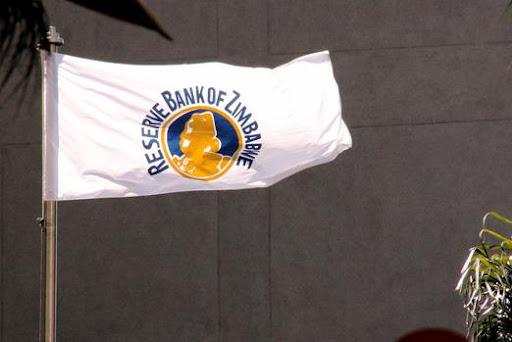News / Local
Zimbabwe banking sector profits drop
08 Aug 2025 at 07:30hrs |
1 Views

Zimbabwe's banking sector has reported a steep drop in earnings for the first half of 2025, with aggregate profits plunging to ZiG5,0 billion (US$184,07 million) from ZiG10,4 billion (US$760,37 million) in the same period last year, according to the Reserve Bank of Zimbabwe's (RBZ) mid-term monetary policy statement released yesterday.
The figures highlight the economic headwinds hitting multiple sectors, although the RBZ insisted that banks remain "safe and sound" on the back of strong financial soundness indicators.
While total assets, loans and deposits rose sharply, profitability and capital efficiency worsened. Total sector assets increased 147% to ZiG191,82 billion, while net profit fell by 76% to ZiG4,96 billion. The first quarter bore the brunt of the slowdown.
The asset base remained heavily concentrated in loans and advances, which made up 32,9% of total assets by June 30. Return on assets and return on equity dropped significantly, while capital buffers weakened. The capital adequacy ratio fell from 46,15% in June 2024 to 33,81% in June 2025, and the Tier 1 capital ratio declined from 40,13% to 25,28%.
Loans and advances grew 146% to ZiG67,51 billion, and deposits rose 159% to ZiG112,77 billion. Foreign currency loans dominated at 88,4% of the total, with agriculture, manufacturing and distribution taking the largest shares. The non-performing loan ratio improved slightly to 2,90% from 3,37% in December 2024, while the loans-to-deposits ratio held steady between 56% and 59%.
The RBZ kept the policy rate unchanged at 35%, despite calls from the Zimbabwe National Chamber of Commerce (ZNCC) and other stakeholders for a cut to improve access to affordable credit. ZNCC has warned that high lending rates — ranging from 40% to 47% — and a slow rollout of the Targeted Finance Facility (TFF) have left small businesses struggling.
"Given the high annual inflation and the need to anchor inflation expectations, the current bank policy rate at 35% is assessed to be still appropriate, and supportive of stability and growth," the RBZ said, adding that rates would only be reduced once inflation consistently falls below the policy rate.
The central bank also retained the 70% foreign currency retention threshold for exporters, tying any review to its forthcoming de-dollarisation roadmap under the National Development Strategy II (NDS2). RBZ said work on redesigned and improved ZiG banknotes was progressing well.
Meanwhile, the microfinance sector recorded aggregate equity of ZiG3,77 billion, down slightly from March 2025 levels. Total microfinance loans increased 6,52% to ZiG6,37 billion, but the RBZ flagged high credit risk, noting that the top 30 lenders control 86,76% of the market. Deposit-taking microfinance institutions saw deposits rise 34,81% to ZiG2,13 billion, with 90,68% in foreign currency.
The RBZ said it will continue to monitor inflation, exchange rates and economic activity before adjusting policy, while also intensifying market conduct checks to ensure microfinance institutions comply with client protection standards.
The figures highlight the economic headwinds hitting multiple sectors, although the RBZ insisted that banks remain "safe and sound" on the back of strong financial soundness indicators.
While total assets, loans and deposits rose sharply, profitability and capital efficiency worsened. Total sector assets increased 147% to ZiG191,82 billion, while net profit fell by 76% to ZiG4,96 billion. The first quarter bore the brunt of the slowdown.
The asset base remained heavily concentrated in loans and advances, which made up 32,9% of total assets by June 30. Return on assets and return on equity dropped significantly, while capital buffers weakened. The capital adequacy ratio fell from 46,15% in June 2024 to 33,81% in June 2025, and the Tier 1 capital ratio declined from 40,13% to 25,28%.
Loans and advances grew 146% to ZiG67,51 billion, and deposits rose 159% to ZiG112,77 billion. Foreign currency loans dominated at 88,4% of the total, with agriculture, manufacturing and distribution taking the largest shares. The non-performing loan ratio improved slightly to 2,90% from 3,37% in December 2024, while the loans-to-deposits ratio held steady between 56% and 59%.
The RBZ kept the policy rate unchanged at 35%, despite calls from the Zimbabwe National Chamber of Commerce (ZNCC) and other stakeholders for a cut to improve access to affordable credit. ZNCC has warned that high lending rates — ranging from 40% to 47% — and a slow rollout of the Targeted Finance Facility (TFF) have left small businesses struggling.
"Given the high annual inflation and the need to anchor inflation expectations, the current bank policy rate at 35% is assessed to be still appropriate, and supportive of stability and growth," the RBZ said, adding that rates would only be reduced once inflation consistently falls below the policy rate.
The central bank also retained the 70% foreign currency retention threshold for exporters, tying any review to its forthcoming de-dollarisation roadmap under the National Development Strategy II (NDS2). RBZ said work on redesigned and improved ZiG banknotes was progressing well.
Meanwhile, the microfinance sector recorded aggregate equity of ZiG3,77 billion, down slightly from March 2025 levels. Total microfinance loans increased 6,52% to ZiG6,37 billion, but the RBZ flagged high credit risk, noting that the top 30 lenders control 86,76% of the market. Deposit-taking microfinance institutions saw deposits rise 34,81% to ZiG2,13 billion, with 90,68% in foreign currency.
The RBZ said it will continue to monitor inflation, exchange rates and economic activity before adjusting policy, while also intensifying market conduct checks to ensure microfinance institutions comply with client protection standards.
Source - The Independent
Join the discussion
Loading comments…































